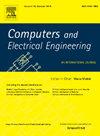Steering authority allocation strategy for human-machine shared control based on driver take-over feasibility
IF 4.9
3区 计算机科学
Q1 COMPUTER SCIENCE, HARDWARE & ARCHITECTURE
引用次数: 0
Abstract
Misoperation when a driver is distracted, e.g., turning the steering wheel unconsciously, preventing the machine from turning the steering wheel, etc., can lead to a false take-over of the vehicle, which poses a danger to shared control. Therefore, it is essential to evaluate the feasibility of driver take-over in distraction status. This paper proposes a steering authority allocation strategy based on driver take-over feasibility to reduce the interference of distracted driver behavior on shared control. First, a driver take-over feasibility framework is established based on quantified driver distraction levels and take-over intention. Then the shared control system is established based on a linear parameter-varying vehicle model and non-cooperative game theory to suppress the interference of time-varying speed and parameter uncertainty on shared control. Subsequently, the steering authority allocation strategy is constructed in conjunction with driver take-over feasibility and environmental risk evaluation. The proposed sigmoid-based mapping function ensures fast and smooth authority allocation. Finally, a series of driver-in-the-loop experiments are conducted to validate the effectiveness of our proposed strategy across various driving scenarios, and the results demonstrate that our strategy has superior performance than other advanced shared control schemes in reducing steering burden, improving driving safety, and enhancing vehicle stability, etc.
基于驾驶员接管可行性的人机共享控制转向权限分配策略
驾驶员分心时的错误操作,如无意识转动方向盘、阻止机器转动方向盘等,会导致错误接管车辆,从而给共享控制带来危险。因此,评估分心状态下驾驶员接管的可行性至关重要。本文提出了一种基于驾驶员接管可行性的转向权限分配策略,以减少驾驶员分心行为对共享控制的干扰。首先,根据量化的驾驶员分心程度和接管意图,建立驾驶员接管可行性框架。然后,基于线性参数变化车辆模型和非合作博弈论建立共享控制系统,以抑制时变速度和参数不确定性对共享控制的干扰。随后,结合驾驶员接管可行性和环境风险评估,构建了转向权限分配策略。所提出的基于 sigmoid 的映射函数确保了快速平稳的权限分配。最后,我们进行了一系列驾驶员在环实验,以验证我们提出的策略在各种驾驶场景下的有效性,结果表明,与其他先进的共享控制方案相比,我们的策略在减轻转向负担、提高驾驶安全性和增强车辆稳定性等方面具有更优越的性能。
本文章由计算机程序翻译,如有差异,请以英文原文为准。
求助全文
约1分钟内获得全文
求助全文
来源期刊

Computers & Electrical Engineering
工程技术-工程:电子与电气
CiteScore
9.20
自引率
7.00%
发文量
661
审稿时长
47 days
期刊介绍:
The impact of computers has nowhere been more revolutionary than in electrical engineering. The design, analysis, and operation of electrical and electronic systems are now dominated by computers, a transformation that has been motivated by the natural ease of interface between computers and electrical systems, and the promise of spectacular improvements in speed and efficiency.
Published since 1973, Computers & Electrical Engineering provides rapid publication of topical research into the integration of computer technology and computational techniques with electrical and electronic systems. The journal publishes papers featuring novel implementations of computers and computational techniques in areas like signal and image processing, high-performance computing, parallel processing, and communications. Special attention will be paid to papers describing innovative architectures, algorithms, and software tools.
 求助内容:
求助内容: 应助结果提醒方式:
应助结果提醒方式:


